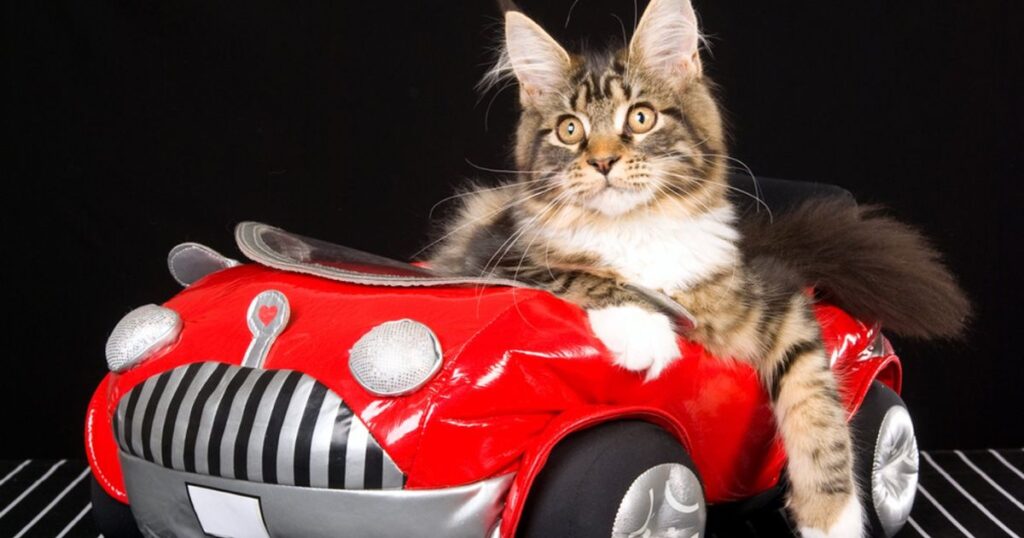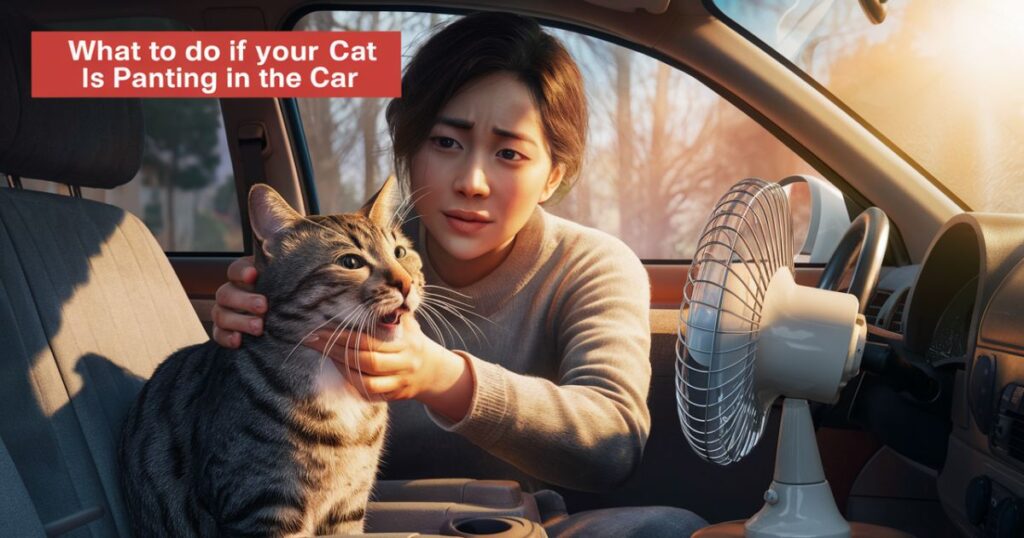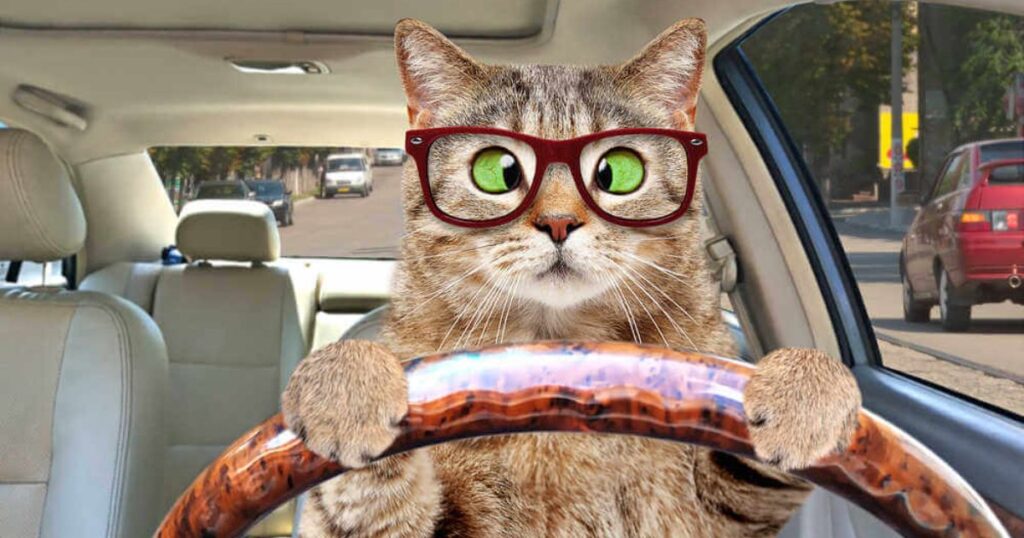Traveling with a cat can be a daunting experience for both pet owners and their feline companions. Unlike dogs, who often enjoy car rides, many cats find the experience stressful, and one alarming behavior you might notice is cat panting in the car.
Seeing your cat’s pants can be unsettling, especially if you’re unsure why it’s happening or how to help. In this article, we’ll explore the reasons behind cat panting in cars, how to prevent it, and what steps to take if it occurs.
What is Cat Panting?
Panting in cats is characterized by rapid, open-mouth breathing, often accompanied by a slight extension of the tongue. While it is more commonly associated with dogs, panting in cats can indicate a range of issues, from mild discomfort to serious health concerns.
Normal vs. Abnormal Panting
Normal panting in cats might occur after intense physical activity, during periods of stress, or in response to high temperatures. However, it should be short-lived and subside once the cat is at rest or in a cooler environment.
Abnormal panting, on the other hand, is persistent and may be accompanied by other symptoms such as drooling, lethargy, or a rapid heart rate. This type of panting is often a sign that something is wrong and requires immediate attention, especially when it occurs in situations like car travel.
Common Causes of Cat Panting in Cars

Cat panting in cars can be caused by several factors, each linked to the stress and physical strain that car travel imposes on cats. One of the most common causes is stress and anxiety, as many cats are highly sensitive to changes in their environment.
The unfamiliar sights, sounds, and motion of a car can trigger a stress response, leading to panting as a way for the cat to cope. Another significant cause is overheating, especially in warm weather or poorly ventilated cars. Cats have limited ways to cool themselves down, and a hot car can quickly lead to overheating, with panting being an early warning sign.
Additionally, respiratory issues such as asthma or bronchitis can be exacerbated by the confined space and stress of a car ride, causing the cat to pant as it struggles to breathe. Finally, motion sickness is another potential cause. The movement of the car can disturb a cat’s inner ear, leading to nausea and discomfort, which can result in panting as a symptom. Understanding these common causes is crucial for preventing and managing cat panting during car travel.
How to Prevent Cat Panting in Cars
Preventing cat panting in cars involves a combination of preparation, environmental control, and sometimes medical intervention. Here are some practical steps to help your cat remain calm and comfortable during car rides:
1. Pre-Trip Preparation
Proper preparation is key to a successful car trip with your cat. Here are some strategies to help your cat acclimate to the car:
- Short Practice Rides: Start with short car rides to get your cat used to the motion and environment. Gradually increase the duration as your cat becomes more comfortable.
- Carrier Familiarization: Ensure your cat is comfortable with its carrier before the trip. Place the carrier in your home and allow your cat to explore it at its own pace. You can encourage your cat by placing treats, toys, or a familiar blanket inside the carrier.
- Comfort Items: Bring along items that your cat finds comforting, such as a favorite toy or blanket. The familiar scent of these items can help reduce anxiety during the trip.
2. Temperature Control
Keeping the car at a comfortable temperature is crucial for preventing overheating. Here are some tips:
- Ventilation: Ensure that the car is well-ventilated. Crack the windows slightly or use air conditioning to maintain a cool environment.
- Shaded Areas: Park in shaded areas whenever possible, and avoid long stops in direct sunlight.
- Cooling Breaks: On long trips, take regular breaks to allow your cat to cool down. Offer water and let your cat out of the carrier in a secure, shaded area.
3. Calm Environment
Creating a calm environment in the car can help reduce stress and anxiety:
- Minimize Noise: Keep the car radio at a low volume or off entirely. If your cat is particularly sensitive to noise, consider playing soft, calming music designed for pets.
- Secure the Carrier: Place the carrier in a stable position where it won’t slide or tip over during the ride. You can use seat belts to secure the carrier.
- Calming Aids: Consider using calming sprays or pheromone diffusers, which can help reduce anxiety. These products mimic the natural pheromones that cats produce, creating a sense of security.
4. Consult with a Vet
If your cat has a history of panting or other issues during car rides, it’s wise to consult with your veterinarian before traveling:
- Health Check-Up: A vet check-up can help rule out any underlying health issues that could be exacerbated by travel, such as respiratory problems or heart conditions.
- Motion Sickness Medications: If your cat suffers from motion sickness, your vet may prescribe medication to help. Over-the-counter options are also available, but always consult your vet before administering any medication.
What to Do If Your Cat is Panting in the Car

If your cat starts panting in the car, it’s important to act quickly. First, stop the car in a safe place and check on your cat. Ensure they have access to fresh air by opening windows or turning on the air conditioning to help with keeping pets cool in the car. Offer water and use a damp cloth to cool your cat’s fur if needed. Look for signs of cat anxiety like restlessness or drooling, which can be linked to cat motion sickness. If panting continues, it’s best to contact a vet to ensure your cat’s safety. Following cat travel tips and being prepared can help keep your cat calm and safe during trips.
When to Contact a Veterinarian
Knowing when to seek veterinary care is crucial for your cat’s well-being:
- Emergency Symptoms: If your cat exhibits severe symptoms such as difficulty breathing, collapse, or seizures, seek emergency veterinary care immediately.
- Post-Trip Check-Up: Even if your cat appears to recover after the trip, a follow-up visit to the vet is recommended to ensure there are no lingering issues.
Conclusion
Cat panting in the car can be a distressing experience, but with proper understanding and preparation, you can make car travel safer and more comfortable for your feline friend. By identifying the causes of panting, taking preventive measures, and knowing how to respond if it occurs, you can ensure that your cat remains healthy and calm during car rides.
Additional Resources
Further Reading: 6 Common Cat Sleeping Positions When Sick: Your Key to Detecting Health Issues!
Frequently Asked Questions
- How do I stop my cat from panting in the car?
Keep the car cool, ensure proper ventilation, and minimize stress with calming aids. - How do you relax a panting cat?
Stop the car, offer water, and create a calm environment with soft music or familiar items. - How to calm down a cat in a car?
Use a secure carrier, play calming music, and provide familiar scents or toys. - When should I worry about my cat panting?
Worry if panting persists, or if it’s accompanied by other symptoms like vomiting or lethargy.







